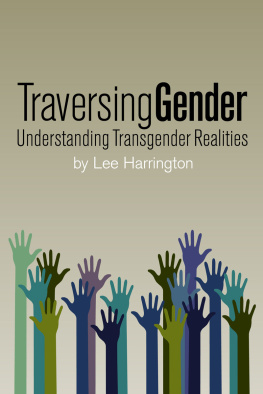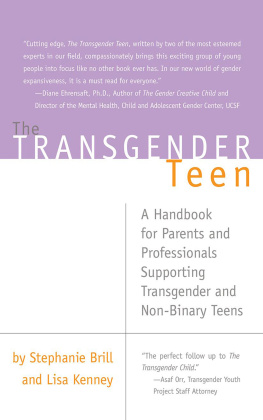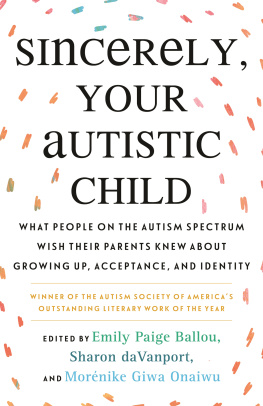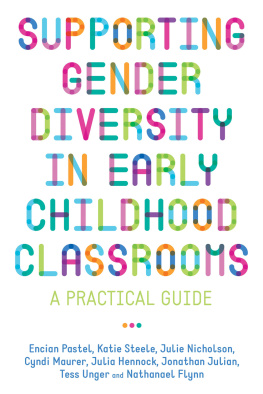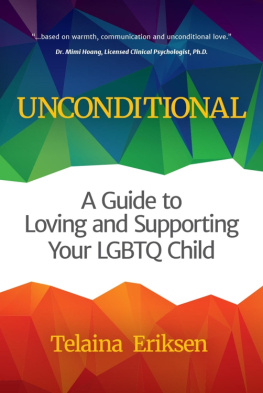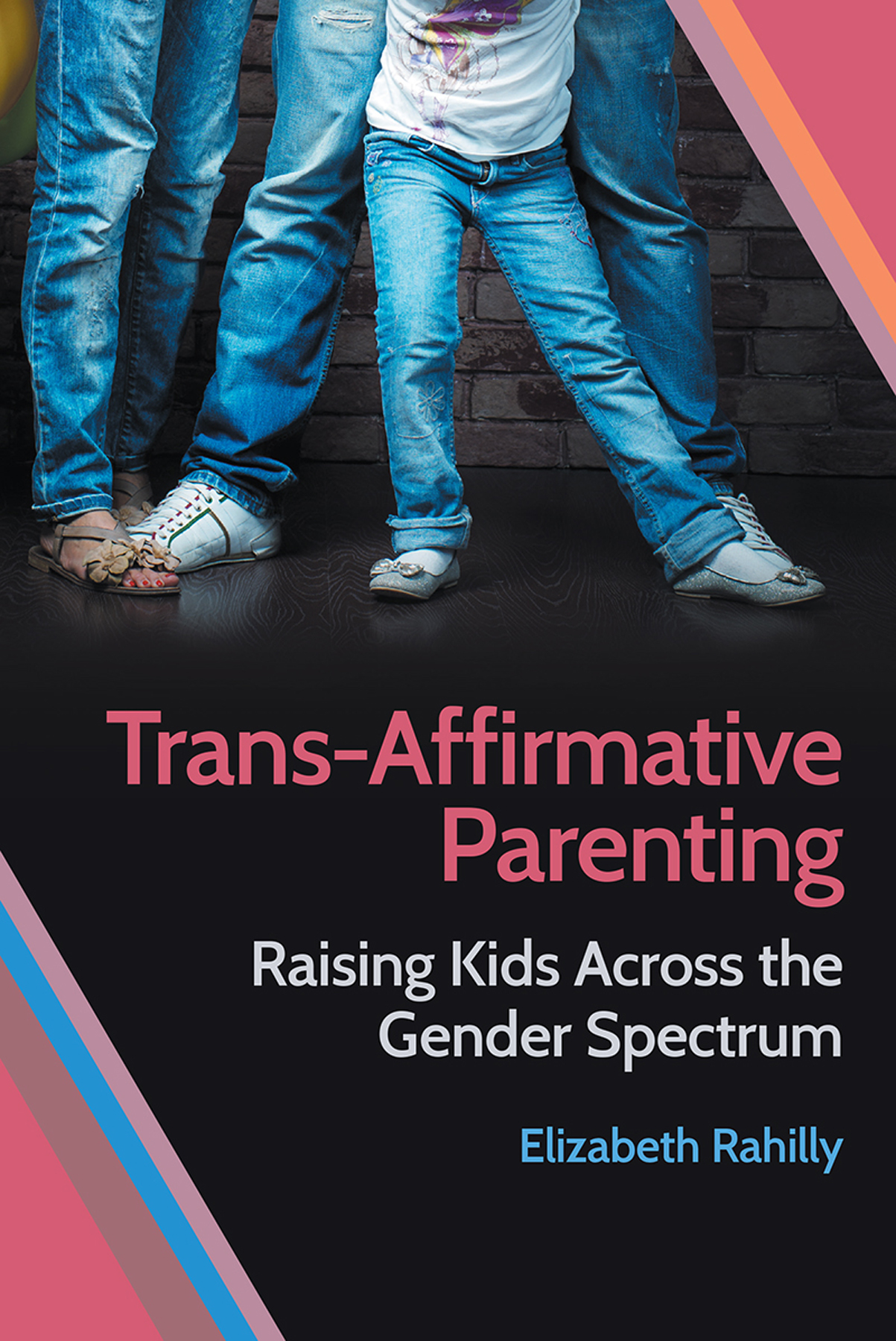References to Internet websites (URLs) were accurate at the time of writing. Neither the author nor New York University Press is responsible for URLs that may have expired or changed since the manuscript was prepared.
Names: Rahilly, Elizabeth P., author.
Title: Trans-affirmative parenting : raising kids across the gender spectrum / Elizabeth Rahilly.
Description: New York : New York University Press, [2020] | Includes bibliographical references and index.
Identifiers: LCCN 2019041959 | ISBN 9781479820559 (cloth) | ISBN 9781479817153 (paperback) | ISBN 9781479833603 (ebook) | ISBN 9781479812806 (ebook)
Subjects: LCSH: Parents of transgender children. | Transgender children. | Gender-nonconforming children. | Gender identity in children.
New York University Press books are printed on acid-free paper, and their binding materials are chosen for strength and durability. We strive to use environmentally responsible suppliers and materials to the greatest extent possible in publishing our books.
Introduction
This is a historical moment, it really is, and I dont know how its going to come out, but it is a very historical process. You know Im seventy-two I lived through the womens movement. When we talked about gender in those days, we were talking about the differences between men and women it was all social, I was around for that and then youre here with this, which takes on another whole aspect of gender.
Leigh, founder of support group for parents of gender-nonconforming children
It is a quiet, early morning in January 2015, and I pull into the empty parking lot of a high school, which is still on holiday break. A few minutes later, Jayne and Glenn arrive too, a white, upper-middle-class, heterosexual-identified married couple in their thirties. After months of e-mailing back and forth, and with a babysitter on duty back at their house, they were finally able to break away from the daily demands of work and family and meet with me. This will be my last formal interview with parents, marking a capstone to a project that started six years prior, with many other families much farther away. Jayne and Glenn have three young children, two of whom will be the focus of our conversation today: Jared, the eldest, a nine-year-old transgender boy, and Amy, the middle child, a six-year-old transgender girl. After exiting our cars and exchanging a few nervous pleasantries, we make our way into the schools library. It is quiet, vacant, and calm, and a perfect place to hear about their parenting journey.
Over the course of our interview, Jayne and Glenn tell me about their vastly different experiences raising Jared and Amy. Jared is on the autism spectrum, and while he is the eldest, they did not recognize or identify him as gender-nonconforming until years after they began observing Amys nonconformity, as early as eighteen months of age. As they articulated throughout our conservation, hers seemed so much more noticeable. Indeed, Amys name appears roughly twice as many times as Jareds in our transcript. Jared, assigned female at birth, was their smart little scientist girl and all about dinosaurs and autopsy movies. In contrast, Amy, assigned male at birth, was all about the feminine: It was not just the pinks and purples, it was the sparkliest, the glitteriest, the most diamonds and fake jewels on clothes or bracelets [she could find], Jayne said. As of age three, Amy was happily making use of the toys, dresses, nightgowns, and accessories that Jared had discarded, including a princess costume box their grandmother had given to Jared. Amy also started issuing memorable comments about her sense of self and her body: Im a girl, Im a girl with a penis, and God made a mistake.
Like many of the parents I interviewed, Jayne and Glenn were at first tickled by the openness of interests their children were displaying. As Jayne said, In the beginning, I think we were pretty open-minded about it, like, This is great, both kids are exploring. Amys going to be nurturing and play with dolls. Jared likes trucks and construction, how cool is that? Were so open-minded, good for us! But over time, they both started to worry about Amys behaviors, especially as extended family members seemed to disapprove. As Glenn said, I started noticing my boy isnt boyish enough Jared was never on my radar like that. Per the reactions of Jaynes mother, for example, they eventually gave the princess box away, over which Amy cried and was extremely distraught. Like many of my interview moments with parents, this one was emotional, both for the storytellers and for me as the listener. I sympathized with the guilt that Jayne and Glenn felt about these kinds of restrictions, which seemed so foolish in hindsight.
During these early years, Jayne attempted strategic, and exhausting, gendered compromises with Amygender hedging, as I have observed it among other parents. so we werent thinking about gender we were just trying to figure out how the heck to get this kid to function without tantruming in a public school. It was all about OT [occupational therapy], PT [physical therapy], therapeutic horseback riding, all those autistic accommodations and interventions. They chalked Jareds preference for not-so-feminine comfortable clothes up to his related sensory sensitivities, too, including plain leggings and tees. In fact, managing Jareds behavioral issues eventually motivated Jayne to let Amy wear dresses to school; it was one less hurdle in the morning routine.
At four years of age, Amy was experiencing bullying and questioning by her peers at school. While Jayne and Glenn did not think at all in terms of sexuality or sexual orientation, others in their midst did, including a close older family friend, a therapist, who thought Amy might be gay when she grows up. Eventually, their pediatrician referred them to a specialist at a gender clinic several hours away. At the start of the visit, the specialist asked Amy for her preferred pronouns (she) and, over the course of several hours, gently attuned Jayne and Glenn to the prospects of transgender and gender-nonconforming children. Shortly after this visit, and with the doctors guidance, Jayne and Glenn experimented with letting Amy dress and express as a girl full-time over the weekend. While Glenn was resistant to the idea that this was anything other than a phase that they could steer Amy out of, he decided to go all in to prove everyone wrong. But this experiment only clarified Amys earnest self-expressions as a girl. As the doctor told them, Youre kind of along for the ride right now, and letting your child lead. In contrast to the authoritarian style of her upbringing, Jayne described this as a real parenting paradigm shift: I always thought that I could shape [them], whether its their gender or their autism (


